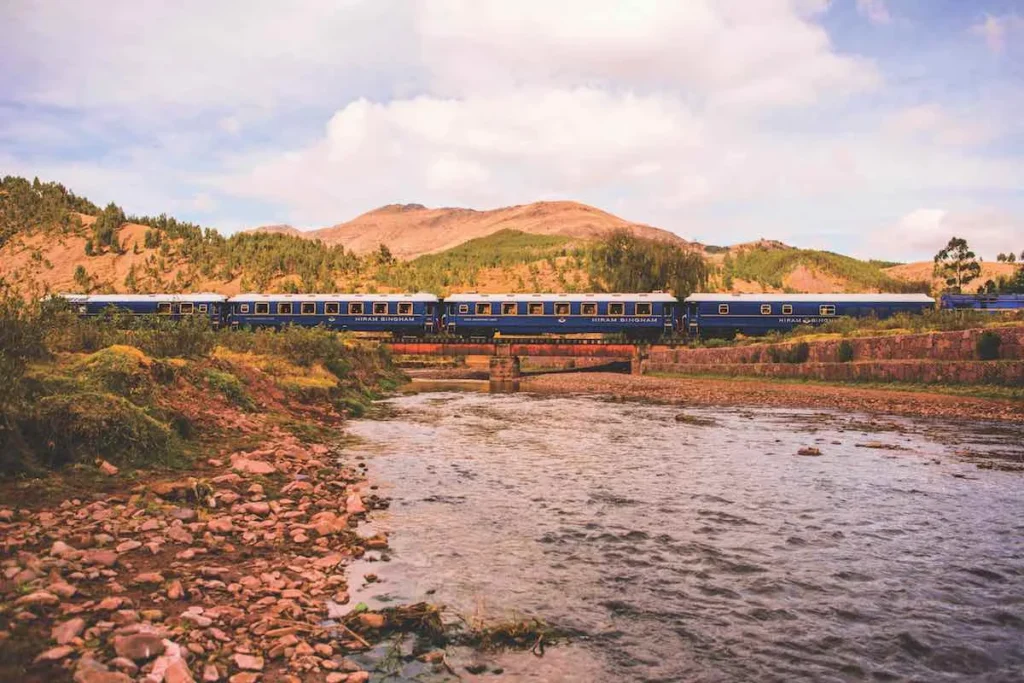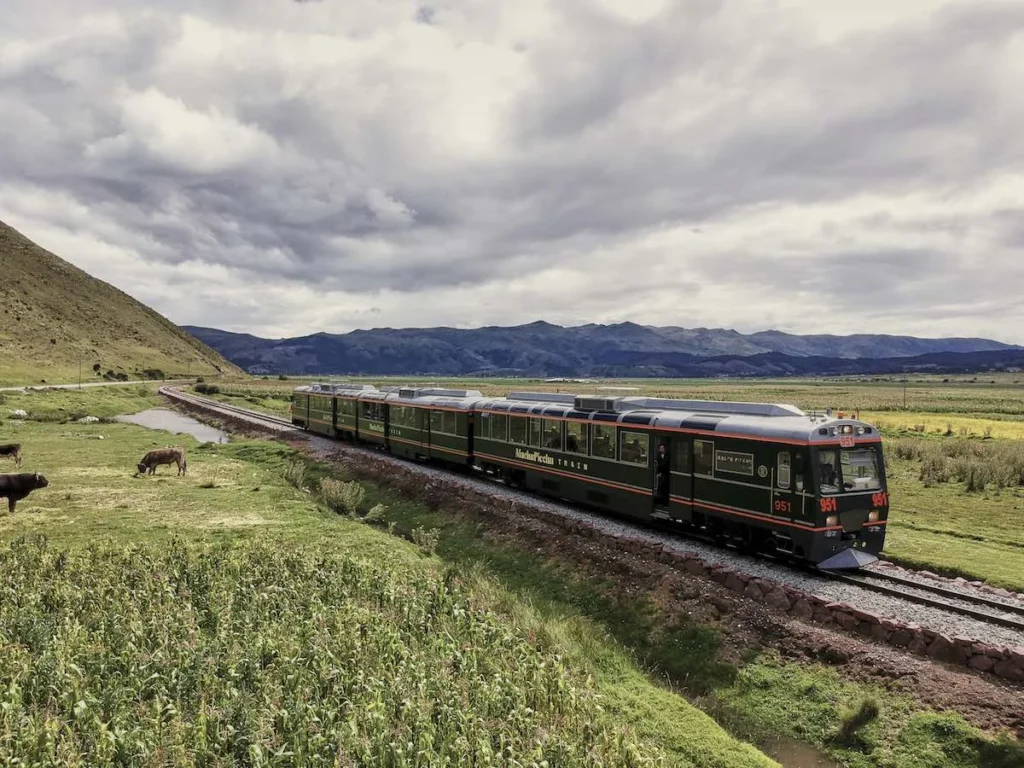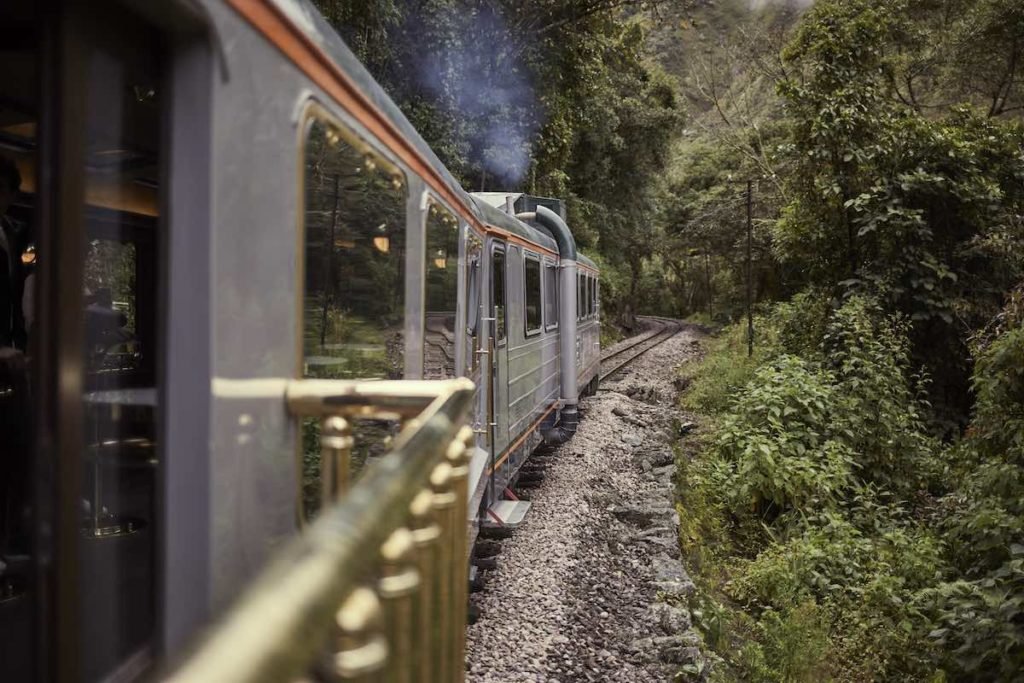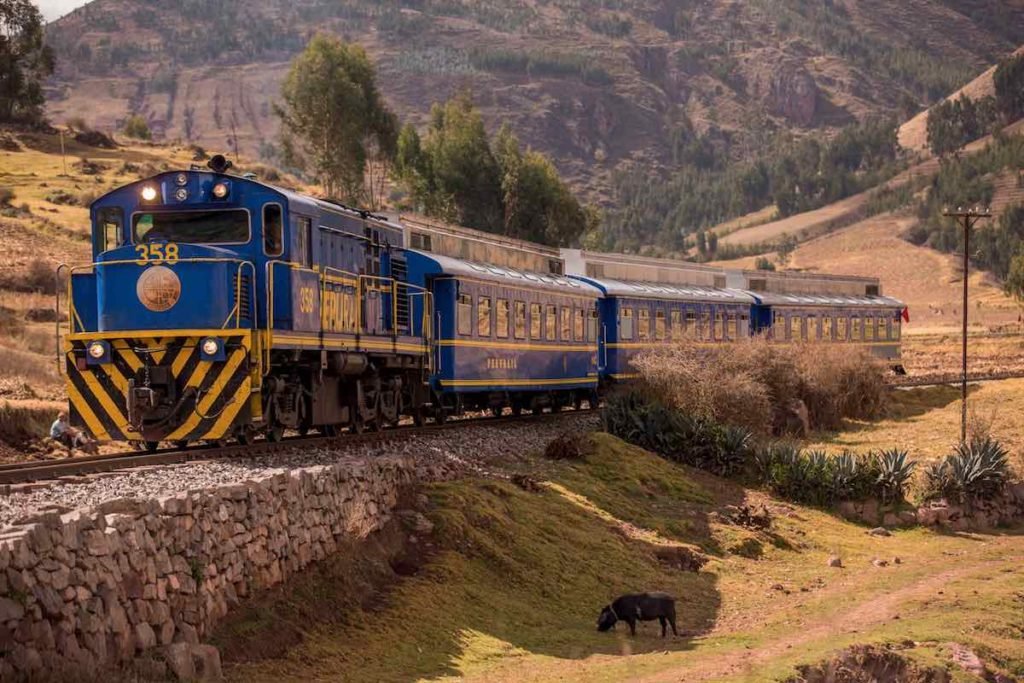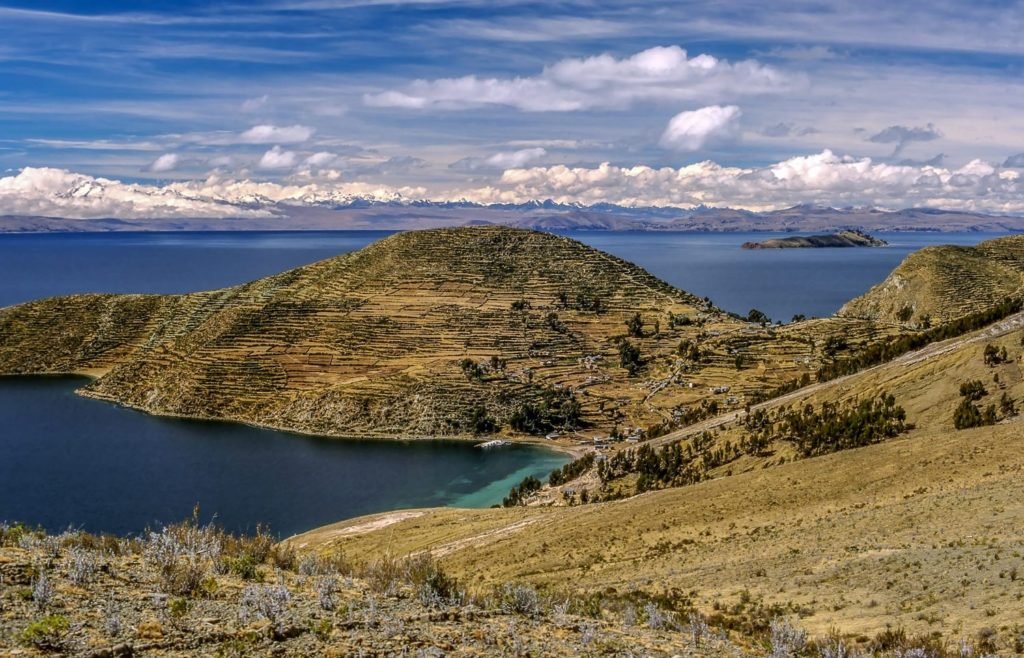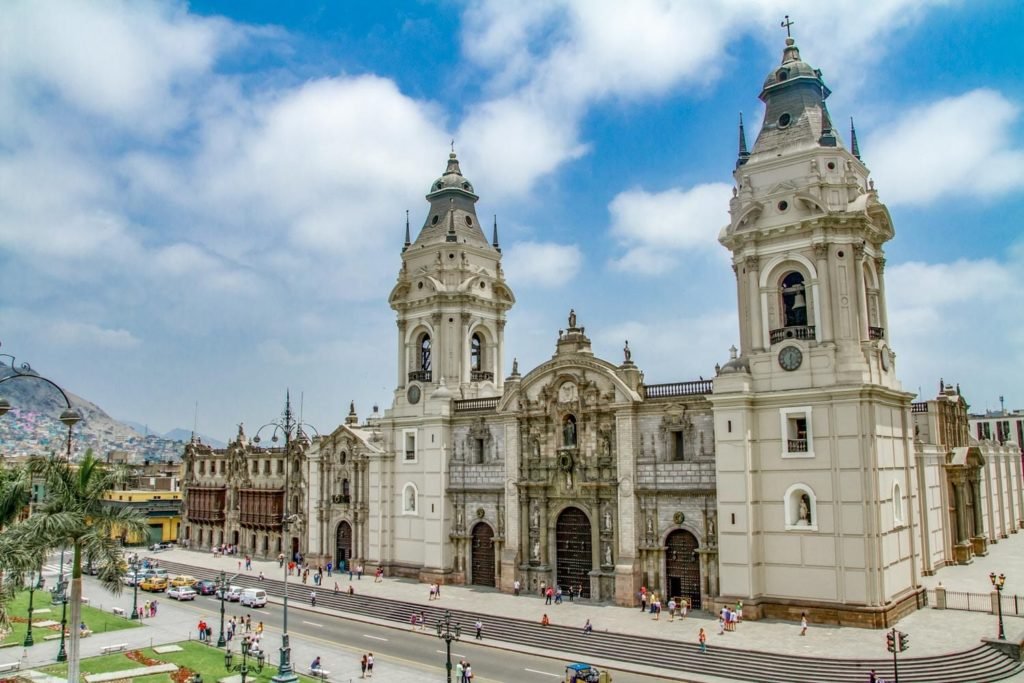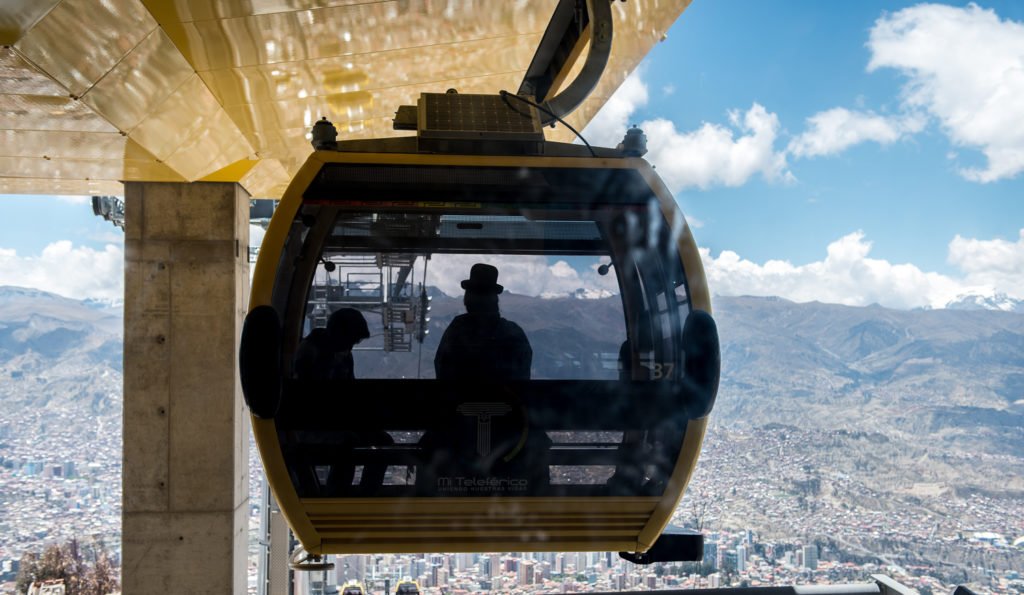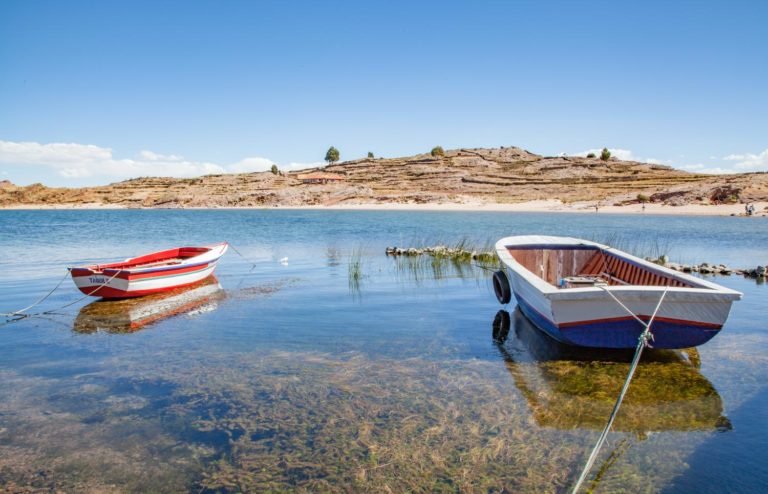Titicaca: South America’s Largest Lake
Lake Titicaca is the cultural birthplace of Inca civilization. According to local folklore, the sun sent his son, Manco Capac, and the moon sent her daughter, Mama Ocllo, to emerge here and found the Inca Empire.
Lake Titicaca, South America’s largest lake, straddles the border of Peru and Bolivia at 12,500 feet above sea level. At this altitude, the water and air are remarkably clear. Titicaca is part of an endorheic basin; it collects and retains rain and melt-water, but allows virtually no outflow. This lake is fed by five major river systems and the shimmering glaciers that surround the Altiplano. Lake Titicaca’s levels were lower in former times—a temple, terraces, walls, and roads have been found below the surface.
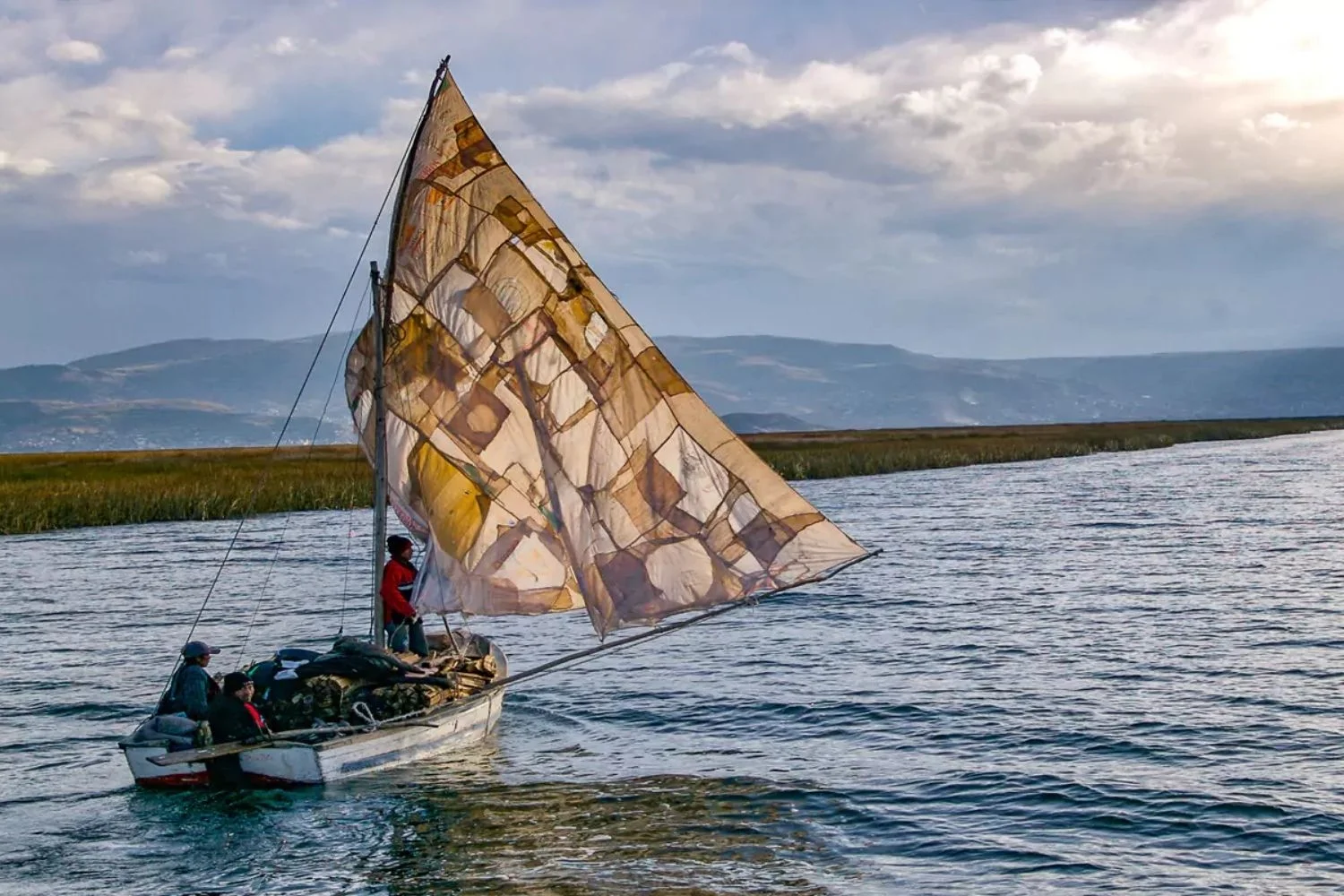
Islands & Islets of Titicaca
Titicaca has 41 natural islands, in addition to countless floating islets. The Uros people, who live offshore near Puno, build floating islands and boats out of cut totora reed. When a couple marries, part of the parents’ island may be cut off and presented as a wedding gift. The residents of Taquile Island, also near Puno, have maintained their traditional lifestyles and dress. Their highly-prized, back-loomed textiles can be purchased at the island’s cooperative store.
The South Valley
On the Bolivian side of the lake are Isla del Sol and Isla de la Luna. Both played important roles in the Inca creation drama. Isla del Sol is home to over 180 ruins, while Isla de la Luna is the site of an Inca convent for Virgins of the Sun. Another important site on the Bolivian side is the Basilica of Our Lady of Copacabana. Also notable is the shrine of the Virgin of Copacabana, a revered image of the Blessed Virgin—and, a few miles from the lake’s eastern shore, the archeological complex of Tiwanaku.
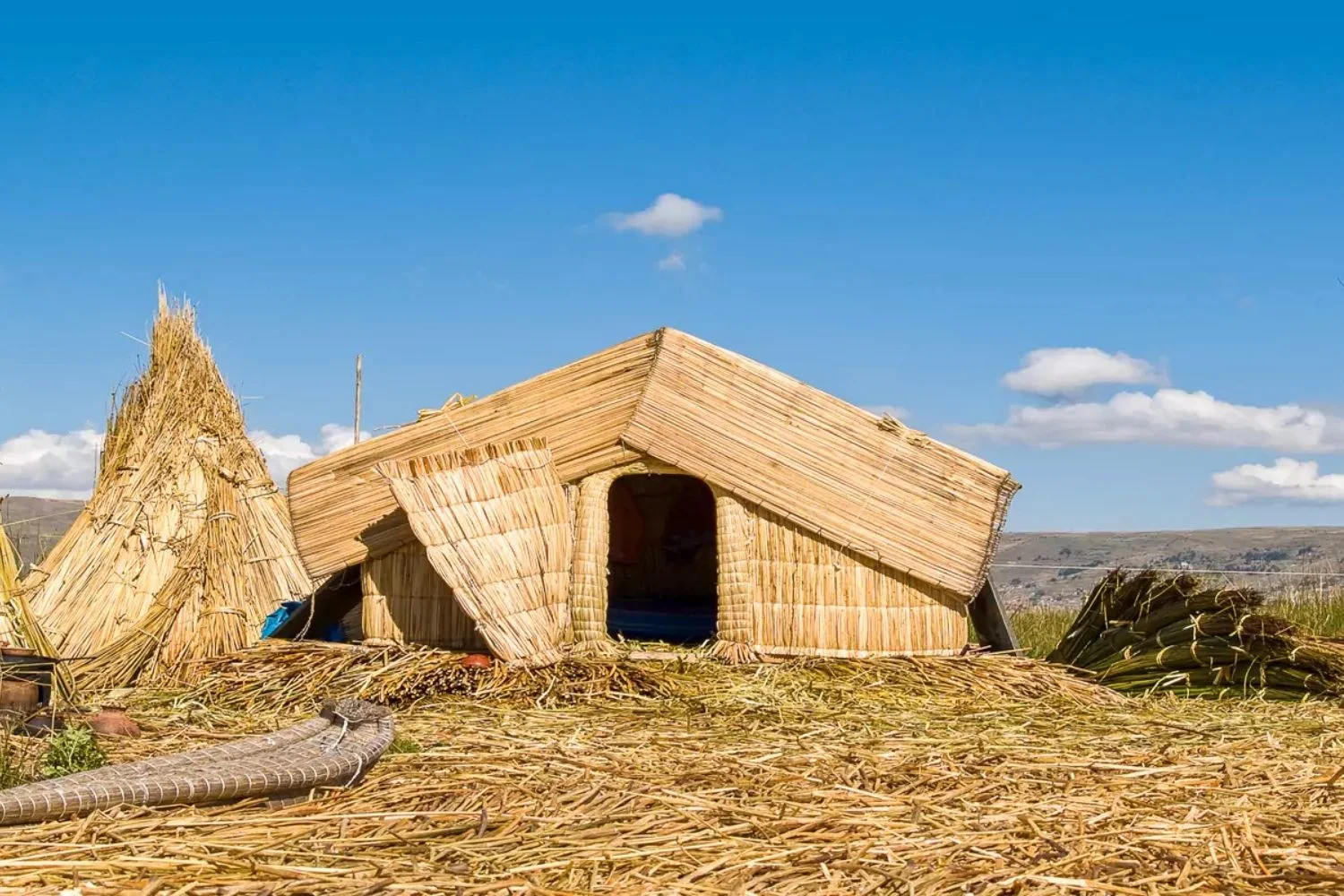
What is the Weather Like?
The climate at Lake Titicaca can be chilly year-round, especially at night, due to its high elevation. The wet season begins in late October and extends into April. In an average year, rain falls on 7 out of 10 days. Average temperatures range from 55-68°F during the day, with colder nights averaging 32-42°F.
During the drier months of May to September, the average monthly rainfall is under 4 out of 10 days. Average temperatures range from 66-81°F during the day, with colder nights averaging 43-50°F. June, July, and August tend to be the sunniest months.
No matter when you visit, the weather in this area can surprise you. Mist and rain can be present at any time of the year. These averages are changing, please check extended weather forecasts using your favorite weather app prior to departure.
Altitude of Lake Titicaca
Cusco’s altitude is approximately 12,500 feet above sea level. To assuage the effects of the thin air , visitors are advised to rest well, avoid alcohol and eat lightly on their first day at high elevation.
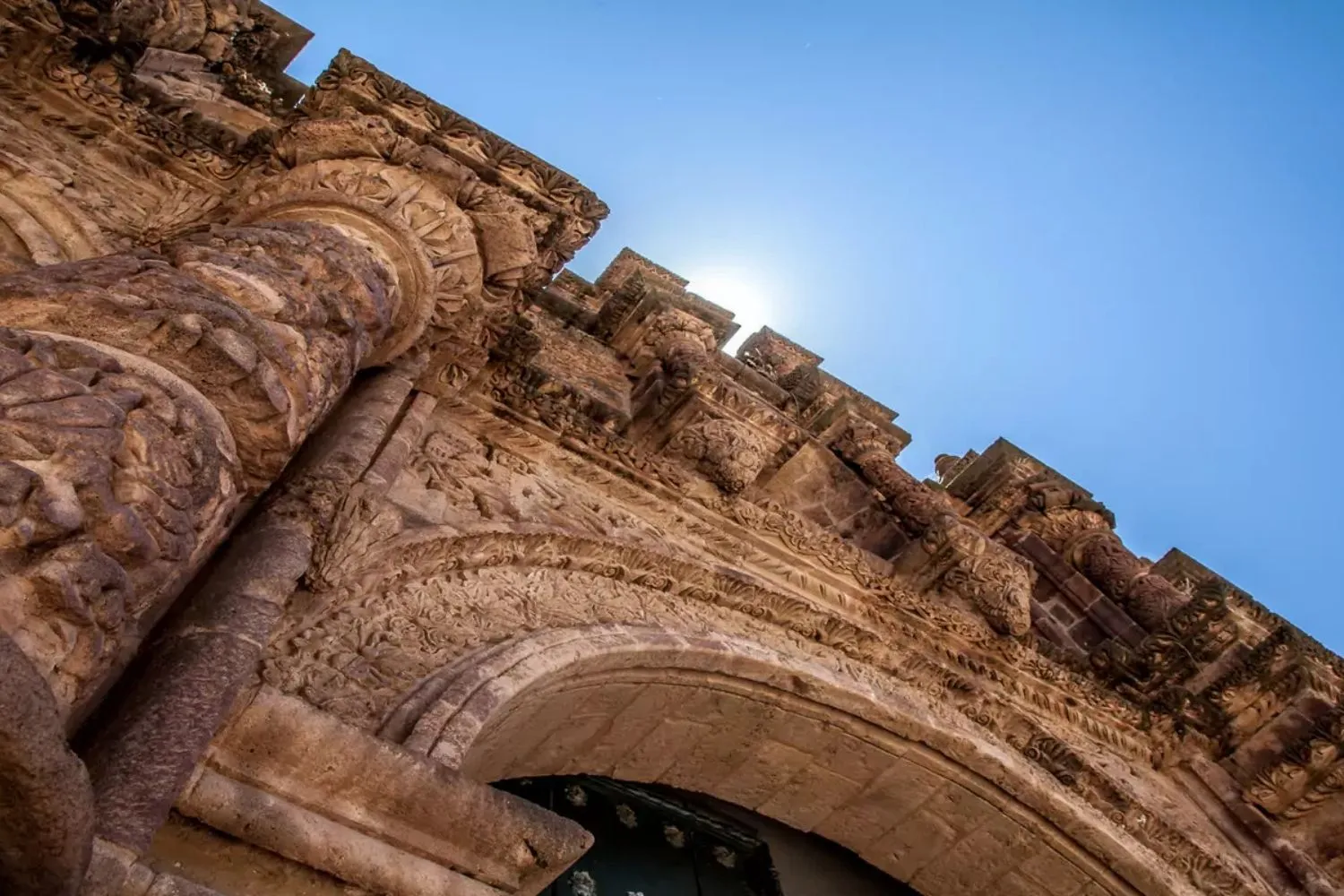
Getting There
The Lake Titicaca region can be reached by air with flights to Juliaca or La Paz. From Lima, these flights typically have a duration of an hour and thirty minutes or two hours. Train Journeys from Cusco or Arequipa are also possible.
Start your journey today
LANDED delivers the finest in custom, private travel to Central America, South America, and Antarctica. These regions are our passion; we know them first-hand and by heart. Speak with one of our travel designers and let us create a tailored itinerary for you in Lake Titicaca.
How to combine Lake Titicaca
Have some extra time? Here are some options for you to combine with.




